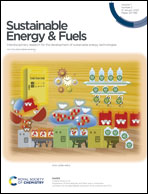Energy management strategy of a novel electric–hydraulic hybrid vehicle based on driving style recognition
Abstract
Driving style is one of the typical factors that impact vehicle energy management during real-world vehicular operation. An in-depth exploration of the association between the driving cycle and driving style is critical to improving the overall performance of new energy vehicles. Based on a novel electro-hydraulic hybrid vehicle (EHHV), combined with variability and complexity of the driving cycle, this paper establishes a velocity subset extraction algorithm for the pretreatment of the driving cycle. According to the collected actual vehicle velocity, we propose the driving style's characteristic parameters and evaluation strategies to achieve driving style recognition. Driving styles were divided into three types: high velocity, medium velocity, and low velocity. To ascertain the close association between the driving style and energy management, the fuzzy logic energy management strategy of EHHV is constructed. The experimental results indicate that the battery consumption rate of EHHV decreased, and the vehicle energy management and performance are optimized. The energy management strategy based on driving style recognition is of great significance and reference value for future research on hybrid electric vehicles.

- This article is part of the themed collection: Electric vehicles and batteries

 Please wait while we load your content...
Please wait while we load your content...